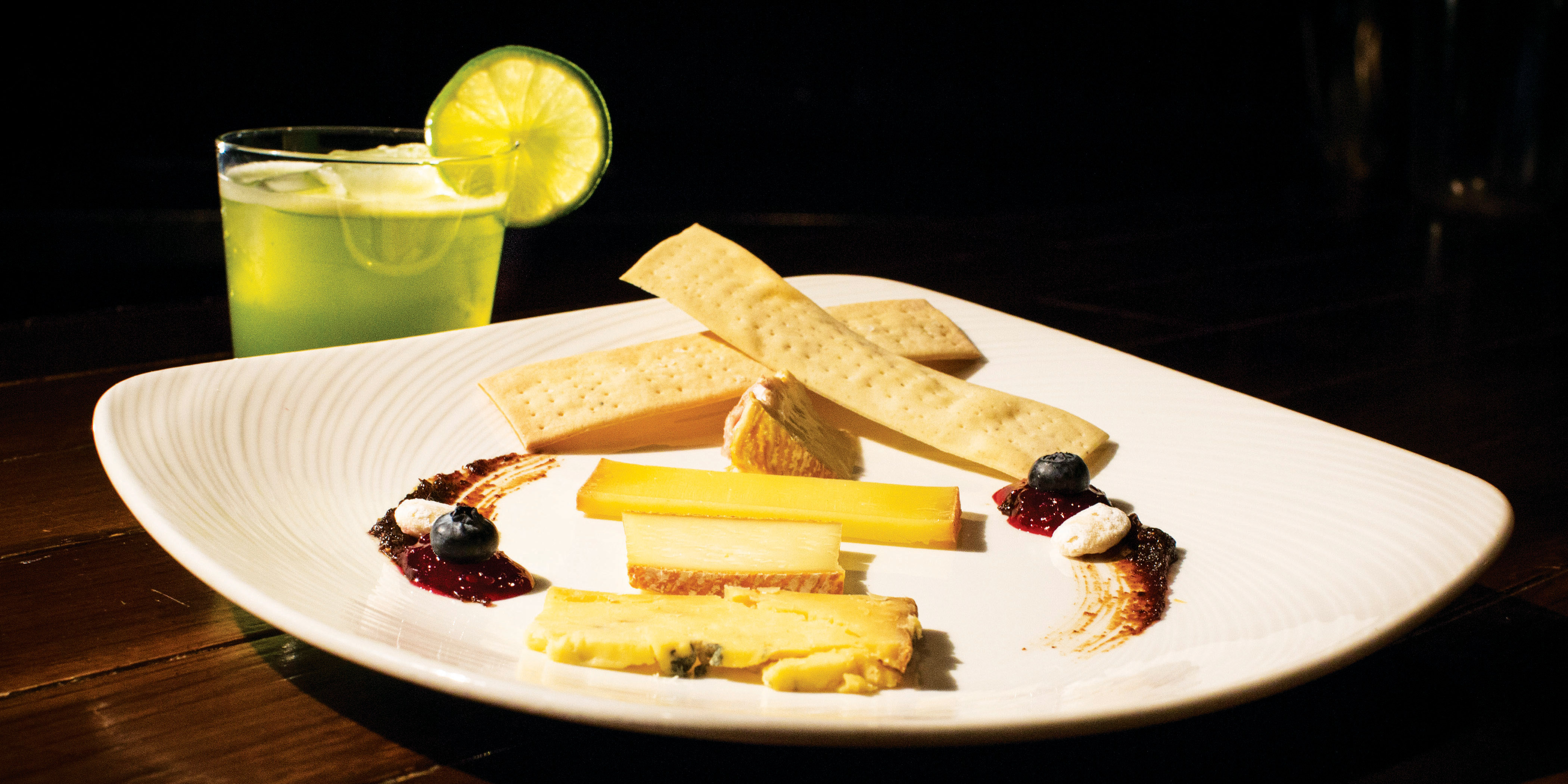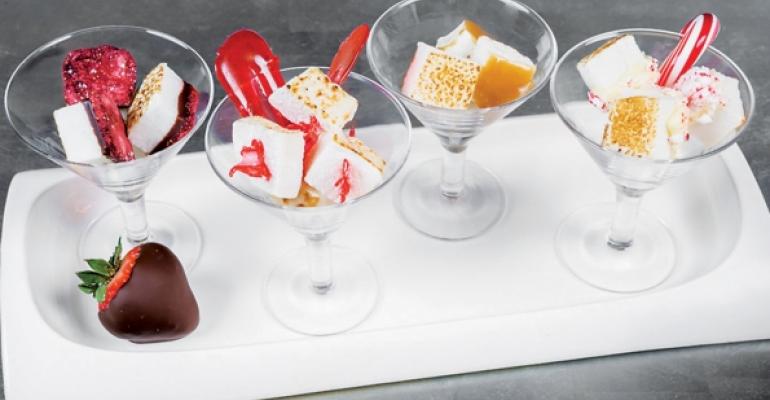Cocktails have become a robust and profitable part of the American dining scene, and restaurant and bar operators are drawing on all their creative skills — from dramatic presentations to culinary flourishes to pairing their drinks with food — to distinguish themselves from competitors.
Fortunately, they don’t have to steal each other’s customers, as the demand for cocktails is growing.
“In the U.S. market, strong consumer interest in cocktails, along with continuing market access and modernization improvements, is providing the industry with a solid base for future growth,” said Peter Cressy, president and CEO of the Distilled Spirits Council of the United States, in a press release.
DISCUS, a trade body of liquor producers and marketers, said sales of hard liquor were up 2.2 percent by volume and 4 percent in dollar terms in 2014, indicating a growing taste for premium products. In fact, sales growth of high-end bottles retailing for between $18 and $30 outpaced those of cheaper liquors, and the only price category that saw sales shrink was the so-called value brands, which retail for less than $12.
Brown spirits in particular are growing fast, and not just bourbon. In fact, cognac was the fastest-growing distilled spirit in 2014, with sales up 11.7 percent in volume terms. Irish whiskey, up by 9.1 percent, also outpaced the growth of bourbon and Tennessee whiskey, which grew by 7.4 percent.
Among white spirits, tequila was the fastest growing, up 5 percent, while traditional unflavored vodka grew by 3.7 percent
Flavored spirits also continued to grow, with 1.9 million more 9-liter cases sold in 2014 than in 2013, but that growth was driven primarily by flavored whiskey, which grew by 2.8 million cases. Sales of flavored vodka and rum, traditionally a growth driver for spirits, fell by a total of 900,000 cases.
Going local
Many restaurants look for ways to distinguish their cocktail programs, and the recent popularity and proliferation of small, local distilleries has helped to fuel that.
The National Restaurant Association, in its “What’s Hot in 2015” Culinary Forecast, reported “micro-distilled and artisan spirits” as the 2015 bar trend most frequently cited by chefs. Locally produced beer, wine and spirits came in at No. 2.
James Gersten, president of BR Guest Hospitality in New York, said artisanal offerings also help deepen customer relationships.
“I think it’s what customers want, but it also keeps our lives fun,” he said, noting that using artisanal and local spirits helps his staff engage with his restaurants’ most curious customers.
Barrel-aged cocktails

One way operators have made sure cocktails can’t be bought elsewhere is by adding distinct touches that aren’t easily replicated. That is one of the driving factors behind restaurants and bars that use oak barrels to age their cocktails in-house.
Peter Kreidler, sous-chef of Clay Pigeon Food and Drink in Fort Worth, Texas, said finding those barrels is easy, as local distilleries see the advertising benefits of having their barrels on display behind the bar.
Kreidler ages a Manhattan in a charred miniature three-gallon oak cask from a local distillery. He pours in four bottles of whiskey, one bottle of vermouth and some bitters, and then ages it for six weeks.
“After about two weeks, it takes on that charred flavor and has a new depth to the drink,” he said, adding that the three-gallon barrel generally sells out within six weeks.
For the summer months, Kreidler said he plans on a lighter barrel-aged cocktail and possibly something vodka-based.
“It will be a ‘patio-pounding cocktail’ rather than a keep-you-warm kind of cocktail,” he said. “It’s a great selling point that you can’t get that drink anywhere else in town.”<
Independent restaurants aren’t the only ones with barrel-aged cocktails. The New York City location of 14-unit Tommy Bahamas’ offers three of them, as well as a Negroni with house-aged sweet vermouth.
Customized cocktails
(Continued from page 1)
The chefs surveyed by the NRA didn’t mention customization as a big bar trend, but “bespoke” cocktails — drinks custom-made to suit the particular tastes of each guest — are becoming more widespread, according to industry sources.
Francesco Desideri, beverage manager for the Fireman Hospitality Group in New York, has developed a bespoke Negroni program for that group’s newest restaurant, Florian.
Traditionally made with equal parts gin, red sweet vermouth and Campari, the Negroni is a classic aperitif for an Italian meal. Desideri is not a fan of gin, so he replaces it with vodka for what has come to be known as a Negroski.
He lets his guests choose gin, vodka or whiskey as the base, Carpano or American Bianco vermouths or elderflower liqueur as the second ingredient, and Campari, Cynar or Aperol as bitters.
“I realized, if you can change one ingredient, why not change them all?,” he said.
He noted that guests can have tequila, cachaça or any other spirit in their bespoke Negroni, as well as more intense or lighter vermouths or bitters.
Culinary cocktails

Bars and kitchens are working more in tandem these days, which not only makes sense economically, but also helps to keep the food and beverage options in sync.
At I|O Urban Roofscape at the Godfrey Hotel in Chicago, chef Riley Huddleston has a list of “Chef’s Cocktails” that he makes in the kitchen, including a Mojito made with kitchen lime soda and mint, and a Margarita topped with a habanero “salt air” foam.
Stevie Schimoler, beverage director of Crop restaurant in Cleveland, offers a Caprese Martini during tomato season, for which he infuses vodka with “very good” heirloom tomatoes and then adds muddled fresh basil shaken with a few drops of balsamic syrup. It’s garnished with a ball of fresh mozzarella and a slice of tomato, soaked in balsamic vinegar and a basil leaf.
Sommeliers are also pairing more cocktails, as well as wine, with food. Austin Carson, sommelier of Mizuna in Denver, oversees the pairings for the restaurant’s eight-course tasting menu.
“We’ll offer guests a beer or a cocktail path as opposed to wine,” he said. It is an option chosen for between 10 percent and 15 percent of tasting menus, according to Carson.
Even if his guests choose wine, he’ll often break up the tasting with a beer or cocktail, “just to keep the palate from getting over-fatigued,” he said. That might be a light cocktail with effervescence and citrus to go with fish.
For a duck breast dry-aged in-house and served with duck fat-cured carrots, he often pairs a Whiskey Sour that is finished with California Pinot Noir.
“It really allows the fruit to pop,” he said.
He also pairs sheep milk cheese with a cocktail called Smoke ’em If You Got ’em. It consists of corn whiskey infused with sweet corn and mixed with a quinoa whiskey, muddled basil and a smoked lager from Utah. The cocktail is shaken, finished with lemon juice and cracked pepper, and served over ice.
Edible cocktails
The NRA report also pointed to edible cocktails — think modern-day Jell-O shots — as a growing trend.
An example is the high-octane marshmallows at the Shadow Mountain Lounge at the St. Regis Aspen Resort, in flavors such as Dipped Strawberry, Candy Apple, Hotty Toddy, with butterscotch schnapps, and Candy Cane. Some customers drop them into hot cocoa with an additional shot of liqueur, a resort spokeswoman said.
Do or Dine in Brooklyn, N.Y., serves gelatinized pickle backs, and Green Russell in Denver serves a foamy Butter Beer, made with butter-infused rum, scotch, bitters, vanilla, half and half, cream and egg white, all dispensed out of a nitrous oxide canister.
Low-alcohol cocktails
Lighter cocktails that tend to be more food-friendly, and which guests can drink without getting too inebriated, also are appearing at more bars and restaurants. Though not on the NRA’s list, operators report the growing popularity of wine- and beer-based cocktails at their restaurant.
Sother Teague, owner of Amor y Amargo, a cocktail bar in New York City, closes periodically for a reservations-only snack-and-cocktail pairing that includes low-alcohol cocktails such as the Bamboo, which combines dry vermouth, sherry and bitters.
“These are great starting or finishing drinks, to ease you into the night or help you wind down,” he said.
Contact Bret Thorn at [email protected].
Follow him on Twitter: @foodwriterdiary





